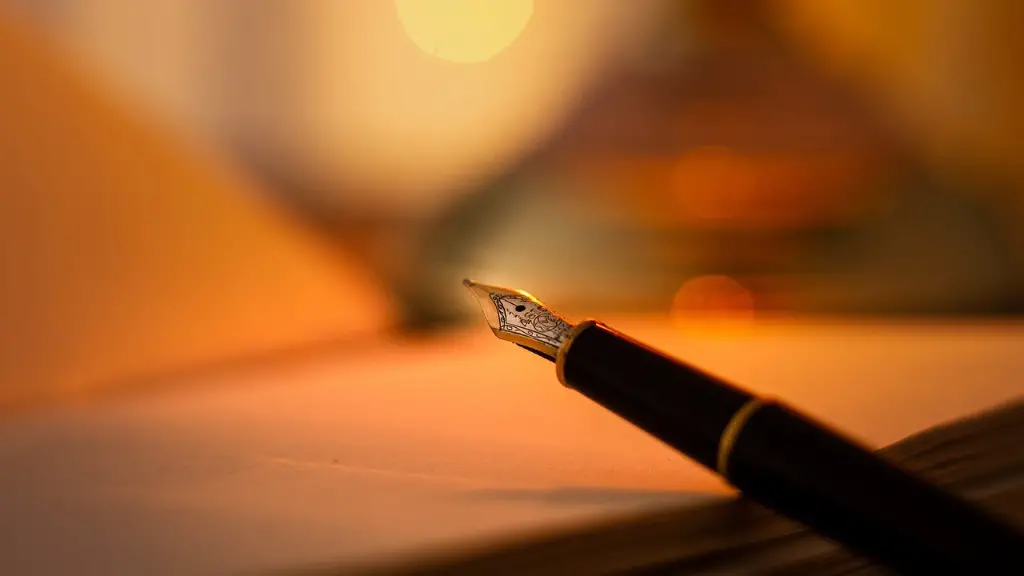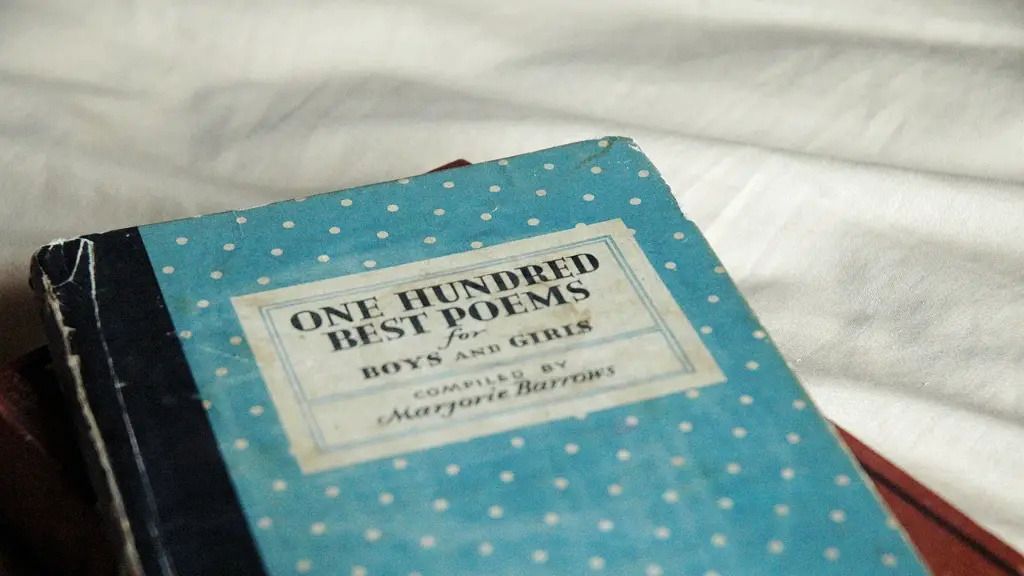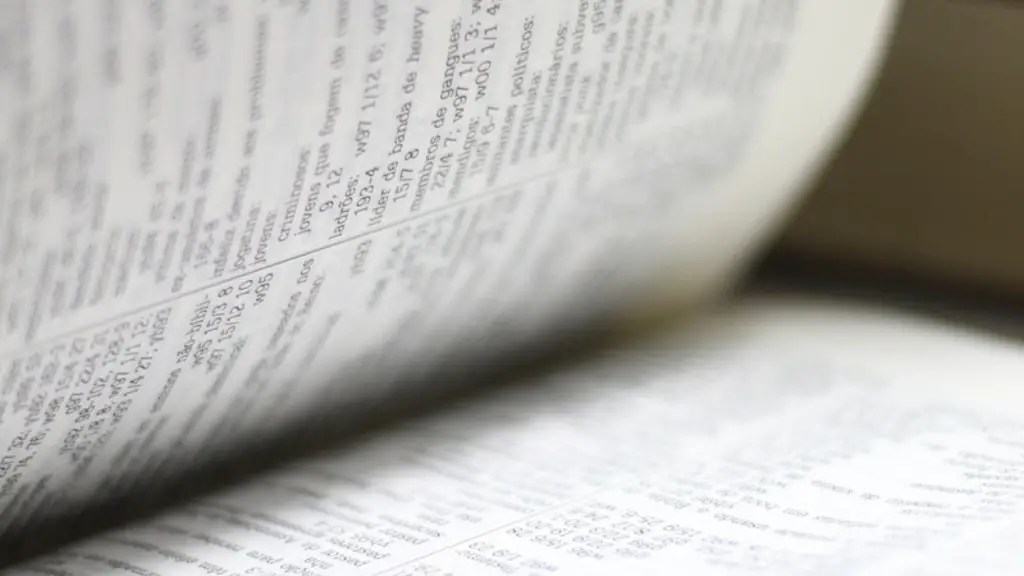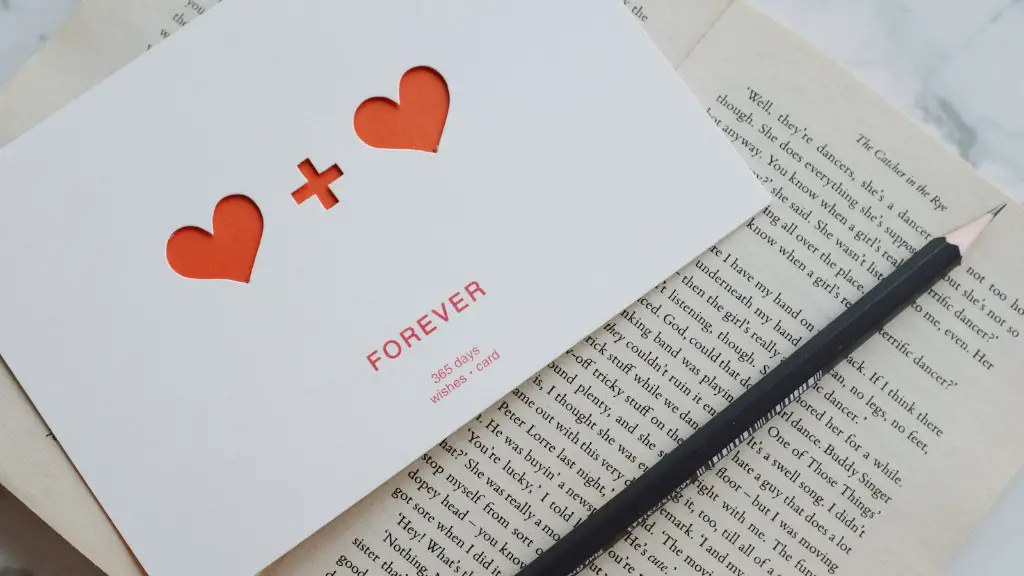Poetry has been around for centuries, and it has evolved since its creation. But one thing that has remained constant is the use of rhyme in poetry. Rhyme can be a powerful tool in poetic composition, bringing in emotion and color to a poem’s words. But there are also those who believe that poetry should not be constrained by rhyme, and should instead be left free to explore any form. So the debate of whether poetry should rhyme continues.
On one hand, those who believe that poetry should always rhyme champion the idea that rhyme can bring cohesion and structure to a poem. Rhyme can also allow for a certain flow of rhythm in a piece of poetry, which is necessary to draw readers in and keep them engaged and interested in the poem. Furthermore, rhyme can also enhance the melody of a poem and bring out the beauty of the words, allowing for a more complete experience for the reader.
On the other hand, those who think that poetry should not always be encumbered by rhyme advocate for a wider range of poetic styles and forms. These proponents for non-rhyme poetry believe that the constraints of rhyme can limit the poet’s creativity and the poem’s potential. They also argue that rhyme can distract readers from the poem’s main message, as some readers may become too concerned with the rhyme scheme of the piece rather than the poem as a whole.
Experts also have divergent views on the matter. Some English scholars suggest that different rhyme styles can or should be used in different types of poetry. It is argued that epic poems or longer works should be mainly composed of end rhymes to provide the poem with structure. Other forms of poetry, such as those focused on personal subjects, may benefit more from internal rhymes, as the smoother change of stresses can give the poetry a more intimate feel.
Meanwhile, science researchers have recently found that the human brain is more receptive to poem with internal rhyme than without. This observation is attributed to the fact that internal rhyme helps to keep the listener engaged in the poem. Moreover, the presence of rhyme in poetry is also found to help readers with memory retention. An experiment conducted with a group of students showed that those students who were exposed to rhymed poetry were able to remember more words than those students exposed to non-rhymed versions of the same poem.
Ultimately, the choice of whether to include rhyme in poetry lies with the poets themselves. Poets should take into consideration the type of poem they are writing and the purpose of the poem. They should also consider the perspectives of their readers when deciding whether they should employ a rhyme scheme in their work or not. Most importantly, however, poets should remember that rhyme is not a requirement when writing poetry, and they should always be free to express themselves however they see fit.
Methods of Rhyme to Consider
When poets decide to use rhyme in their poetry, it is important for them to consider the type of rhyme that fits best for their piece. There are several methods of rhyme to choose from, including end rhyme, internal rhyme, assonance, consonance, and alliteration. Knowing the difference between them and which ones will be the most beneficial for the poem is the key to using rhyme in the best way.
End rhyme is the most commonly used method in poetic composition. In end rhyme, the words at the end of two or more lines have matching sounds. This is a great way to create cohesion in a poem and add to the rhythm of the poem.
Internal rhyme is a similar method as it also uses words that have matching sounds. However, instead of being used in the ends of lines, internal rhyme occurs within the same line. This type of rhyme can help to reinforce the rhythm of the poem, while also providing a musical quality.
Assonance and consonance are two other methods of rhyme that poets can use. Assonance is a repetition of sounds caused by the reuse of vowel sounds in words. While consonance is repetition of sounds caused by the reuse of consonant sounds. Both of these methods can help to add to the sound and flow of the poem.
Finally, alliteration is the repetition of beginning consonant sounds at the beginning of words. This method of rhyme is often used to draw attention to specific words or ideas as it makes them stand out in the poem.
Different Types of Poetry that Rhyme Particular Well
Different types of poetry rely on a specific type of rhyme to make the poem effective. Ballads, for example, are traditional narrative poems that tell a story. These works often utilize end rhyme to create contrast and to draw attention to the action of the poem.
Meanwhile, light verse relies heavily on end rhyme, internal rhyme, and consonance to create a more playful and catchy atmosphere for the poem. This type of verse often utilizes simple language and often employs humor in its wording and structure.
Sonnets are another type of poem that often rely heavily on rhyme schemes. This type of poem is comprised of fourteen lines, usually in iambic pentameter. The use of rhyme allows for a level of structure in sonnets while also creating a feeling of movement in the poem.
Limericks are a particular type of light verse that relies heavily on alliteration and internal rhyme to create a comic effect. These poems often employ a pattern of five lines with an AABBA rhyme scheme.
Odes are another type of poem that utilise rhyme to bring out the message of the poem. Odes can often utilize both end rhyme and internal rhyme as a way to emphasize certain words and ideas in the poem.
Rhyme in Modern Poetry
In modern times, rhyme has become less and less common in poetry. This is due to the fact that more and more poets are looking for ways to push the boundaries of poetry and are looking for new forms and structures in place of traditional rhyme. While rhyme still exists in certain works of modern poetry as a way to maintain the coherence of a poem, for the most part it has evolved beyond rhyme and is exploring other levels of poetic composition.
Poets are instead relying more on free verse, which is a form of poetry that does not use rhyme. This type of writing is favored by modern poets as it allows them to be completely free with their writing and they are able to explore different topics and ideas without the restriction of a rhyme scheme. This is a more experimental type of writing that aims to create a more emotional and intimate experience for the reader.
Overall, the debate of whether poetry should rhyme has existed for centuries, and it is unlikely that it will be resolved anytime soon. Modern poets have begun to explore new ways of writing, while traditionalists still cling to the notion of rhyme. Ultimately, poets should still be free to choose which method works best for their poem and should always be open to trying new things and pushing the boundaries of poetry.
Rhyme as a Tool to Create Meaning
Though rhyming poetry may be less popular in the modern age, rhyme is still a powerful tool that poets should consider when writing. Rhyme can be used in many ways to create meaning in a poem. Rhyme can be used to emphasize certain words or ideas, bring out the story of the poem, and give the poem structure and flow.
For example, poets can use end rhyme to emphasize the change of a situation in the poem. End rhymes can also be used to create an impetus for the poem, as the repetition of rhyme will lead readers to the climax of the poem. Additionally, the use of internal rhyme can draw attention to the words and can create a more personal and intimate experience for the reader.
Rhymes can also be used as a way of creating a story for the poem. Using a rhyme scheme as a way to structure the poem can help to guide the readers through the poem, allowing them to easily follow the story being told. Furthermore, the use of rhyme will create a sense of flow to the poem, making it easier for the reader to remain engaged with the poem.
Therefore, the use of rhyme should not be completely disregarded in the writing of poetry. Even in the modern age, rhyme can still be a powerful and effective tool in conveying the message of a poem. Poets should consider if their poem would benefit from rhyme, and if so, which form of rhyme would be the most effective for conveying their message.
Rhyme in Different Languages and Cultures
Though rhyme is mainly attributed to English and is generally used in English poetry, it is a technique that is found in poetic compositions in all languages. Rhyme schemes vary depending on the language and the culture. For example, in Chinese poetry, rhyme is often used to create a sense of movement and to create contrast in a poem.
Rhyme is also important in the oral tradition of certain cultures. For centuries, the use of rhyme in stories and poems has allowed for easier memorization and for easier transmission of stories from one person to another. This is especially true for traditional epics and folk tales, where the presence of rhyme is essential in order to keep the story alive.
In certain languages, such as Italian, rhyme is also used to great effect. The presence of rhyme is usually used to create a song-like atmosphere for the poem, and to draw attention to certain words or ideas. In Spanish, rhyme is also used to create tension and to bring out the drama of the poem.
Therefore, when considering the use of rhyme, it is essential to consider the language and culture in which it is being written. Different languages and cultures have different values when it comes to the use of rhyme, and poets should take this into account when writing their poems.
Rhyme as a Tool to Unite People
Though the debate of whether poetry should rhyme rages on, it is impossible to deny that rhyme has been and can be a powerful tool in uniting people across different cultures and languages. For centuries, the use of rhyme in stories and poems has been used as a tool to bridge the gap between different cultures.
In certain cultures, the use of rhyme has been used to disrupt social inequality. Poets have used rhyme in order to give voice to the voiceless and to discuss taboo topics in a more palatable form. Rhyme is also being used by certain poets as a tool to break through language and cultural barriers, allowing for an easier understanding of different cultures.
Therefore, it is essential to recognize the power of rhyme in poetry, and its ability to bring people together. Rhyme can be a tool not just to create beauty, but to discuss important topics and to bridge the gap between different cultures. Poets should always bear this in mind when choosing to utilize rhyme in their poems.





